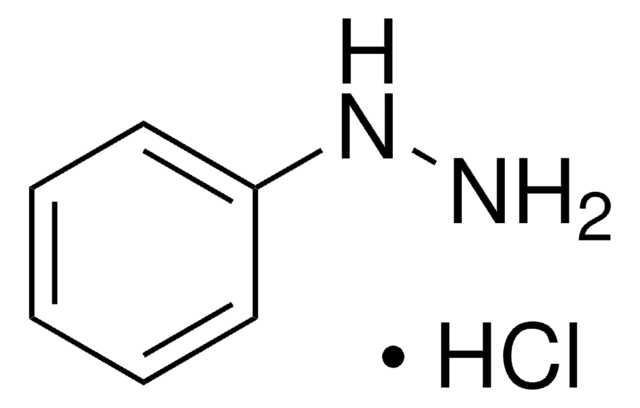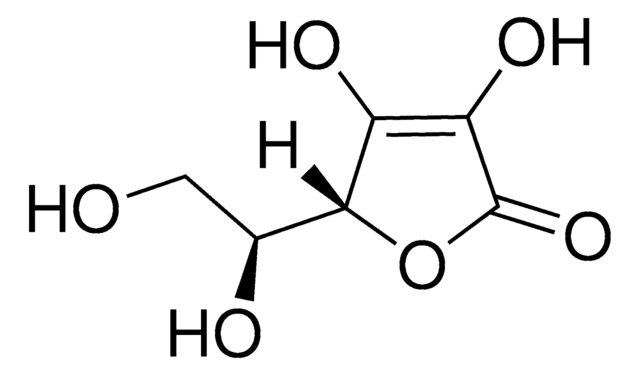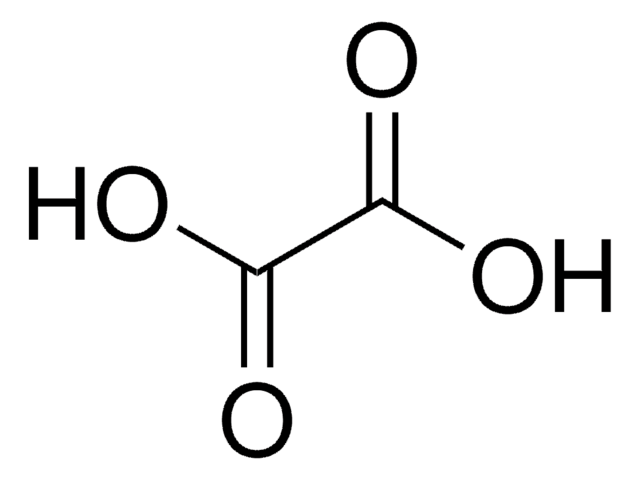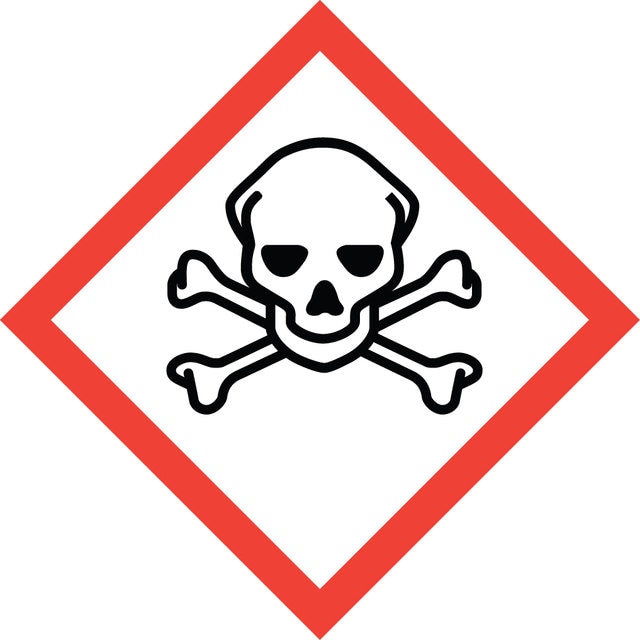M4128
Mercury(II) thiocyanate
96.5-103.5% (titration)
동의어(들):
Mercuric isothiocyanate, Mercuric sulfocyanide, Mercuric thiocyanate, Mercury di(thiocyanate), Thiocyanic acid, mercury(II) salt
로그인조직 및 계약 가격 보기
모든 사진(1)
About This Item
Linear Formula:
Hg(SCN)2
CAS Number:
Molecular Weight:
316.75
Beilstein:
3561344
EC Number:
MDL number:
UNSPSC 코드:
12161600
PubChem Substance ID:
NACRES:
NA.22
추천 제품
Quality Level
분석
96.5-103.5% (titration)
반응 적합성
core: mercury
reagent type: catalyst
mp
165 °C (dec.) (lit.)
density
3.71 g/mL at 25 °C (lit.)
SMILES string
N#CS[Hg]SC#N
InChI
1S/2CHNS.Hg/c2*2-1-3;/h2*3H;/q;;+2/p-2
InChI key
GBZANUMDJPCQHY-UHFFFAOYSA-L
유사한 제품을 찾으십니까? 방문 제품 비교 안내
일반 설명
Mercury(II) thiocyanate is the coordination complex of Hg2+ and the thiocyanate ion(SCN-). It is primary used as catalyst for the addition of thiocyanic acid (HSCN) across the triple bond of a variety of alkynes and as a precursor to synthesize other thiocyanate complexes. Within analytical chemistry, it is also used for the colorimetric determination of chloride ions in water.
애플리케이션
Mercury(II) thiocyanate can be employed as a reactant for the synthesis of:
- Polymeric mercury(II) coordination complexes with various derivatives of 4,4′-bipyridine ligands via the branched tube method.
- Manganese mercury thiocyanate (MMTC), an organometallic optical single-crystal.
- Heterotrinuclear copper(II)–mercury(II)–copper(II)complexes possessing antibacterial and antifungal activities.
품질
Contains a small amount of mercurous thiocyanate insoluble in dilute acid.
면책조항
For U.S. Customers: Contains mercury; Do not place in trash - dispose according to local, state, or federal laws.
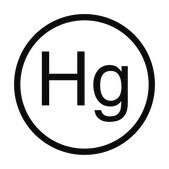

신호어
Danger
유해 및 위험 성명서
Hazard Classifications
Acute Tox. 1 Dermal - Acute Tox. 2 Inhalation - Acute Tox. 2 Oral - Aquatic Acute 1 - Aquatic Chronic 1 - STOT RE 2
보충제 위험성
Storage Class Code
6.1A - Combustible acute toxic Cat. 1 and 2 / very toxic hazardous materials
WGK
WGK 3
Flash Point (°F)
248.0 °F - closed cup
Flash Point (°C)
120 °C - closed cup
Mercury(II) Thiocyanate.
eEROS (Encyclopedia of Reagents for Organic Synthesis) (2001)
Mercury (II) acetate/thiocyanate coordination polymers with n-donor ligands, spectroscopic, thermal and structural studies.
Mahmoudi G , et al.
Inorgorganica Chimica Acta, 362(1), 217-225 (2009)
Mercury (II) coordination polymers generated from 1, 4-bis (2 or 3 or 4-pyridyl)-2, 3-diaza-1, 3-butadiene ligands.
Mahmoudi G, et al.
CrystEngComm, 9(8), 704-714 (2007)
Crystal growth and characterization of the organometallic nonlinear optical crystal: manganese mercury thiocyanate (MMTC).
Wang X Q, et al.
Materials Research Bulletin, 36(5-6), 879-887 (2001)
M A Koupparis et al.
Journal of pharmaceutical sciences, 75(8), 800-804 (1986-08-01)
An automated flow-injection determination of chloride salts of drugs, based on the colorimetric mercurothiocyanate determination of chloride counterion is described. The majority of these drugs can be determined, using chloride ion standards, with a coefficient of variation less than 1%
자사의 과학자팀은 생명 과학, 재료 과학, 화학 합성, 크로마토그래피, 분석 및 기타 많은 영역을 포함한 모든 과학 분야에 경험이 있습니다..
고객지원팀으로 연락바랍니다.


